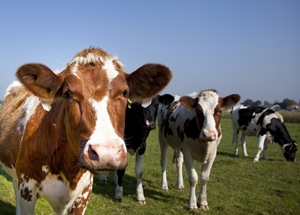Australia’s food sector is quite extensive, comprised of farmers, producers, distributors and retailers. The length of the industry’s supply chain inadvertently introduces several hazards that companies cannot afford to neglect.
According to the Australia New Zealand Food Standards Code, food businesses are required to implement food safety programs built on methods detailed in the Hazard Analysis and Critical Control Point (HACCP) system. That means restaurants, farmers, logistics companies and other enterprises must implement processes that iteratively identify and eliminate risks associated with edible goods.
The Australia New Zealand Food Standards Code set a max. level for tutin, know what it is! :https://t.co/eHLU8yP1Z8 pic.twitter.com/fO9SKeFV1V
— BPSC (@ApicultureNZ) November 9, 2015
Basic obligations
The New South Wales (NSW) Department of Primary Industries Food Authority (the Authority) detailed some of the responsibilities food businesses need to undertake. Each of the following legal commitments is based on Standard 3.2.1 of the Food Standard Code:
- Identify possible hazards that may culminate into problems across all food handling operations.
- Determine where and when these hazards may occur.
- Regularly assess and review risk control approaches.
- Implement punitive action whenever personnel, customers or other parties find that certain hazards are not arrested.
- Develop, record and verify detailed prerequisite food safety programs.
- Submit your hazard control strategies to reviews every 12 months.
Each of these responsibilities are directly tied to the HACCP system’s guiding principles. although are not exact renditions. One of the exceptions is a food business’s requirement to submit to audits from food safety auditors. These authorities not only ensure products are safe to consume, but also scrutinise the efficacy of company food safety programs.
Developing and implementing a food safety program
Ensuring the quality of edible products involves putting a number of assets and people into action. For example, simply providing chefs with food temperature measuring instruments is just one out of many steps organisations need to take.
A US FDA warning letter spoke of seafood HACCP violations and drug residue in dairy cow http://t.co/yJVq4eQVuN
— Checkit (@EKT_Checkit) June 9, 2015
To assist businesses in developing HACCP-based programs, the Authority created several templates specific to different products. For example, businesses involved in the primary production of dairy products must adhere to regulations dictated in Food Standards Code Standard 4.2.4 “Primary Production and Processing Standard for Dairy”.
One of the stipulations associated with Standard 4.2.4 is that companies regularly assess milk and colostrum for microbiological hazards. For the most part, these tests will be conducted by accredited authorities, but it will be at the expense of the business owner.
From a broader perspective, HACCP’s reach touches every food business operating in Australia. With the right training, methods and instruments, these organisations can easily identify and eliminate product hazards.









 Reduce cooking oil costs while ensuring quality
Reduce cooking oil costs while ensuring quality Expert knowledge on CO2 monitoring
Expert knowledge on CO2 monitoring Refrigeration knowledge - in 3 modules
Refrigeration knowledge - in 3 modules



